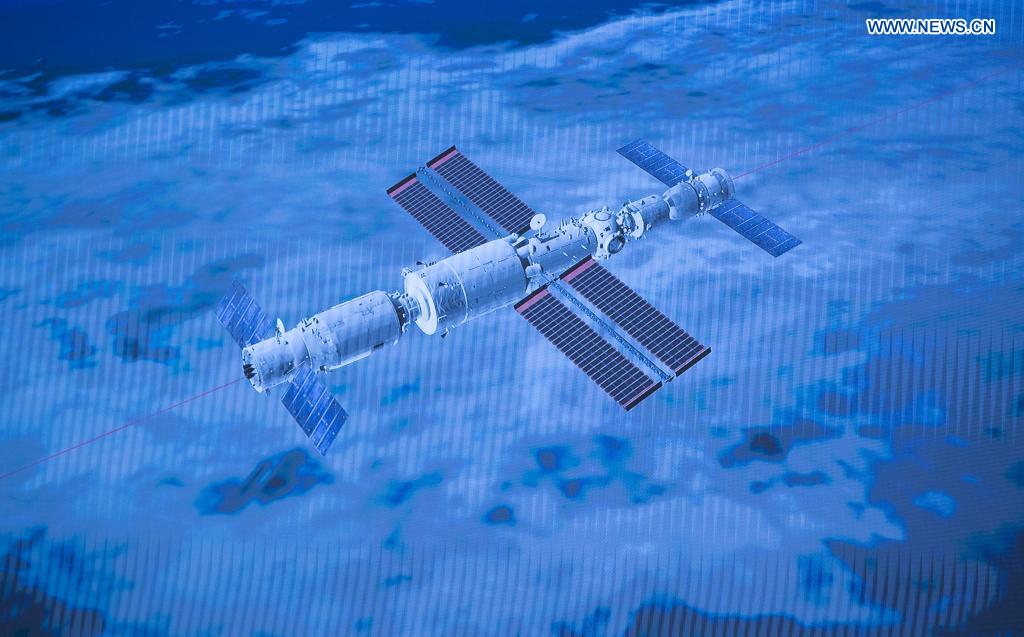Robotic arm utilizes top technologies
By ZHAO LEI | China Daily | Updated: 2021-06-24 09:42

Mechanism will assist operations, connect modules for space station
A robotic arm mounted on the core module of China's space station has world-class technologies and capabilities, according to a researcher with knowledge of the station program.
Pang Zhihao, a retired spaceflight researcher at the China Academy of Space Technology, said on Wednesday that the robotic arm on the Tianhe module is the most advanced and sophisticated of its kind ever developed by China.
"The arm is 10 meters long when fully extended. It has several motorized joints, which allow it to act like a human arm to the maximum extent possible," he said.
Pang said the robot is self-relocatable and can reach many parts of the module through an inchworm-like movement. It is able to handle payloads with a weight of 25 metric tons.
The arm is critical to the construction and operation of the Chinese station, called Tiangong, or Heavenly Palace, as it will be used to connect two space labs - scheduled to be launched next year - with the Tianhe module to form the entire station, carry packages from cargo spaceships, capture visiting spacecraft and assist astronauts in their spacewalks, Pang explained.
It can also execute a wide range of other tasks such as examining Tiangong's external condition and monitoring the environment outside the spacecraft, he said.
When the space labs dock with Tianhe, the machine can connect with smaller arms to have a longer reach and heavier capacity, Pang added.
During their three-month mission, the three Chinese astronauts - mission commander Major General Nie Haisheng, Major General Liu Boming and Senior Colonel Tang Hongbo - are scheduled to conduct two spacewalks, during which they will use the robotic arm to install equipment and check Tianhe's external condition.
One maneuver will involve Liu standing on the arm to fulfill some operations, he told reporters on June 16, a day before their mission was launched from the Jiuquan Satellite Launch Center in northwestern China's Gobi Desert. He added that astronauts will wear a new-generation, domestically developed extravehicular suit during the spacewalks.
The most well-known robotic arm on a spacecraft is the Mobile Servicing System on the International Space Station. Its core component is the Space Station Remote Manipulator System, commonly known as Canadarm2, as it was designed and built by Canada.
The large robot has played an irreplaceable role in the assembly and maintenance of the ISS, the largest and most complex space-based facility, as it moves equipment and supplies around the station, supports astronauts working in space, and assists in external maintenance.
























